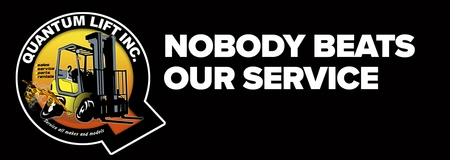Forklift Emissions and Testing: Why They Matter and How to Reduce Emissions
What are forklift emissions?
Forklift emissions are the gases and particles that are released from the exhaust of forklift engines. The most common types of forklift engines are internal combustion engines that run on gasoline, diesel, propane, or natural gas. These engines burn fuel to generate power, but they also produce by-products such as carbon monoxide (CO), nitrogen oxides (NOx), hydrocarbons (HC), and particulate matter (PM).
Why are forklift emissions harmful?
Forklift emissions can have negative impacts on both human health and the environment. Exposure to high levels of CO can cause headaches, nausea, dizziness, confusion, and even death. NOx and HC can contribute to smog formation, which can irritate the eyes, nose, and throat, and aggravate respiratory conditions such as asthma. PM can penetrate deep into the lungs and cause inflammation, infection, and cancer. Forklift emissions can also contribute to global warming and climate change by increasing the greenhouse effect.
How are forklift emissions regulated and tested?
Forklift emissions are regulated by various federal, state, and local agencies, such as the Environmental Protection Agency (EPA), the Occupational Safety and Health Administration (OSHA), and the California Air Resources Board (CARB). These agencies set standards and limits for the amount of emissions that forklifts can produce, and require periodic testing and certification to ensure compliance. Forklift emissions testing is performed by certified technicians who use specialized equipment to measure the concentration of CO, NOx, HC, and PM from the forklift exhaust. Based on the results, the technicians can provide recommendations for tuning, repairing, or replacing the forklift engine or components.
How can forklift emissions be reduced?
Forklift emissions can be reduced by following some best practices for maintenance and fuel selection. Some of these practices are:
- Perform regular maintenance and tune-ups on forklift engines, according to the manufacturer’s specifications and recommendations. This can improve the efficiency and performance of the engine, and lower the emissions.
- Perform regular emissions testing and inspection on forklifts, especially if they operate indoors or in enclosed spaces. This can help identify and correct any problems or issues that may cause excessive emissions.
- Choose the right fuel type and quality for the forklift engine. Different fuels have different emission characteristics and requirements. For example, propane and natural gas are cleaner-burning fuels than gasoline and diesel, and require less maintenance and adjustment. However, they also have lower energy density and power output, and may not be suitable for all applications. The fuel quality should also meet the standards and specifications of the engine manufacturer and the emission regulator.
- Consider switching to alternative fuel sources or technologies, such as electric, hybrid, or hydrogen fuel cell forklifts. These options can significantly reduce or eliminate the emissions from forklifts, and offer other benefits such as lower noise, lower operating costs, and longer lifespan. However, they also have some challenges and limitations, such as higher initial cost, availability, infrastructure, and safety.
Conclusion
Forklift emissions and emission testing are important aspects of forklift operation and management. By understanding the sources, effects, and regulations of forklift emissions, and by implementing the best practices for maintenance and fuel selection, forklift operators and owners can reduce the emissions and improve the health and safety of workers and the environment.
Watch our promotions for special deals on Certified Emissions Testing.
©






